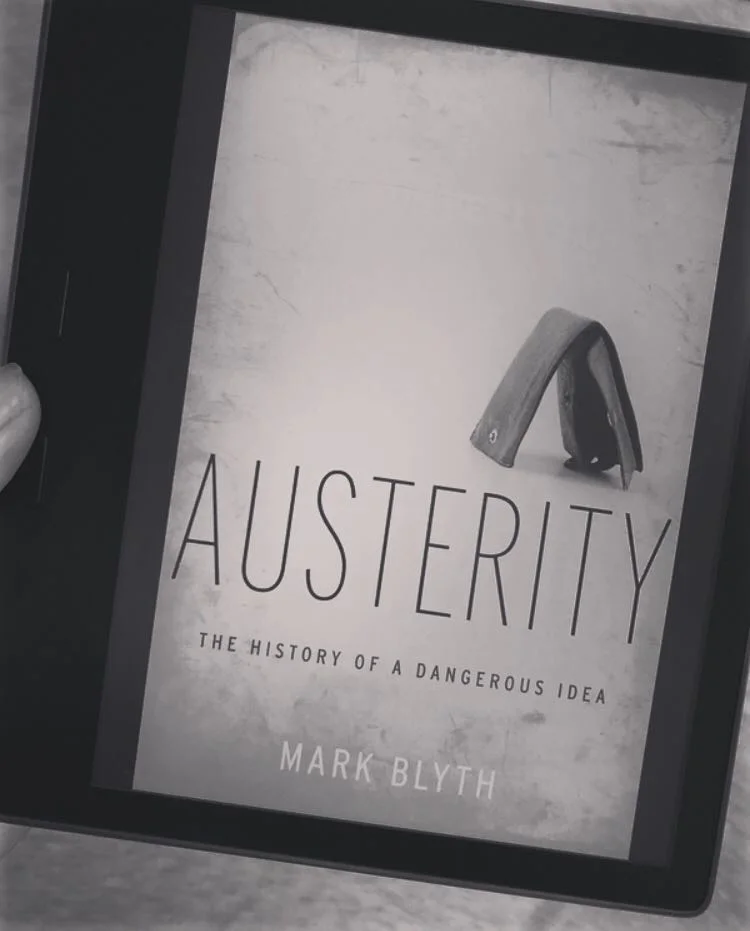Austerity: The History of a Dangerous Idea by Mark Blyth
Last week I was reading Friedman’s tour de force, The Lexus and The Olive Tree. With the intention to explore the relationship between globalization and austerity, one thing led to another, I went down the rabbit hole and ended up rereading Mark Blyth’s Austerity.
Rereading this book after 2 years, I still believe Blyth included the best short account of the credit crunch that I have read, and illustrated how ordoliberalism, neoliberalism, monetarism and Keynesianism relate to one another, and how a mixture of the former ended up dominating the thinking of policymakers everywhere, especially in the eurozone. So I am once again, recommending this book.
Austerity, a dangerous economic concept that has been debunked numerous times. We get it. It doesn’t work. The IMF, albeit sotto voce, acknowledged austerity’s inadequacy, while World Bank released a report showing that austerity is mostly ineffective. So how is this book value-adding? It all lies in the way Mark Blyth guides us through a whirlwind examination on the ideologies and practical origins of Austerity.
Why did it take the world centuries to grasp the fallacy of composition? Why were the investors schizophrenic about fiscal consolidation and growth? Why did it take Europe decades to realize that cuts can only happen if someone else is willing to gain, and there is no someone else to pass the costs onto as we all try to shrink to grow? It is for the whys that leads me to pick up this book.
Today, the European financial-cum-debt crisis rolls on from summit meeting to summit meeting, where German ideals of fiscal prudence clash with Spanish unemployment at 25 percent and a Greek state is slashing itself to insolvency and mass poverty while being given ever-more loans to do so. In the US, those problems take the form of sclerotic private sector growth, persistent unemployment, a hollowing out of middle-class opportunities, and a gridlocked state. What they have in common is their supposed cure: austerity.
Mark Blyth did not go straight into the topic of Austerity, instead, he started his discussion by demystifying the 2008 financial crisis by examining the structure of collateral deals in US repo markets, the mortgage-backed derivatives, the role played by correlation and tail risk in amplifying these problems, and the damage done by a set of neoliberal economic ideologies that blinded the regulators to the risks building up in the system. And how these ideologies are what drives economic policies including austerity. One thing to note that the author is a strict Keynesian, just like Joseph E Stiglitz, and also tend to ramble school of thoughts defensively, yet, in return, he provided detailed analysis on the theories of Keynesian, ordoliberalism, and neoliberalism.
If you want an overview of what's at stake in the fight over austerity, just read the first chapter. If you want to know why we all have to be austere and why a pile of stinky mortgages in the US ended up blowing up the European economy, read the subsequent chapters. If you want to know where the notion that austerity is a good idea comes from in terms of its intellectual lineage, read chapters 4 and 5. If you want to know why austerity is such a dangerous idea, apart from what's in chapters 2 and 3, read chapter 6. If you want one-stop shopping for why the world is in such a mess and you are being asked to pay for it, read the whole book.



